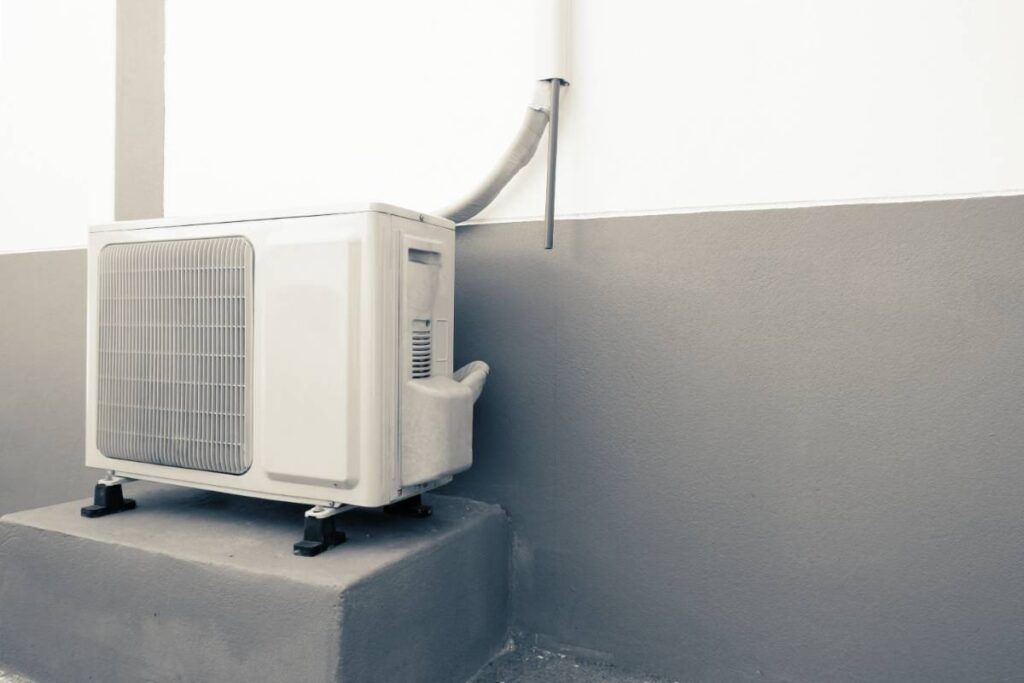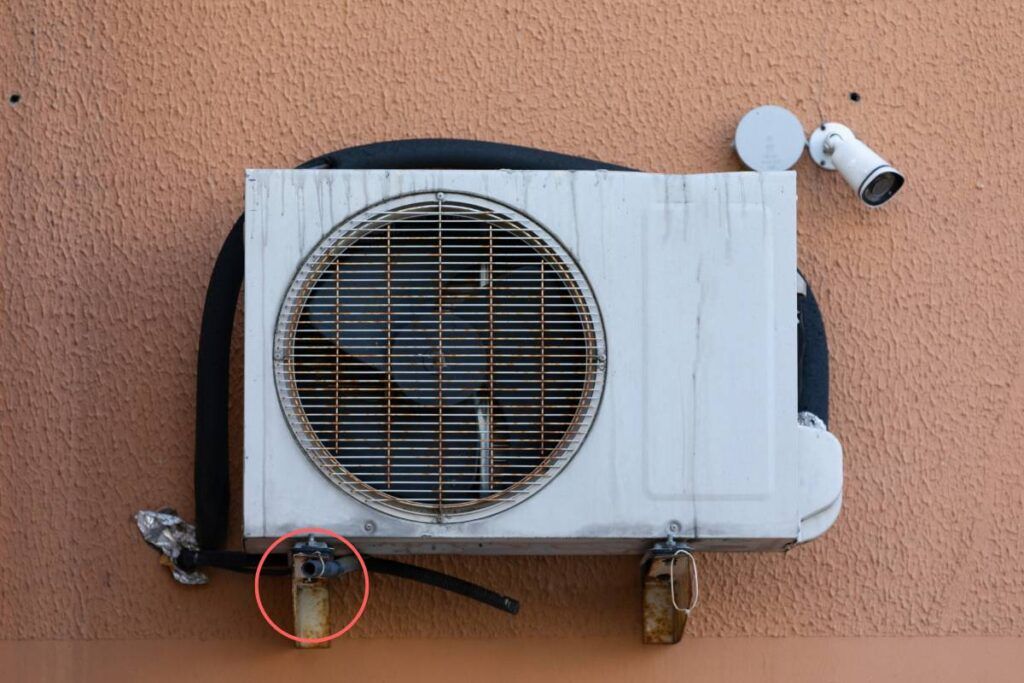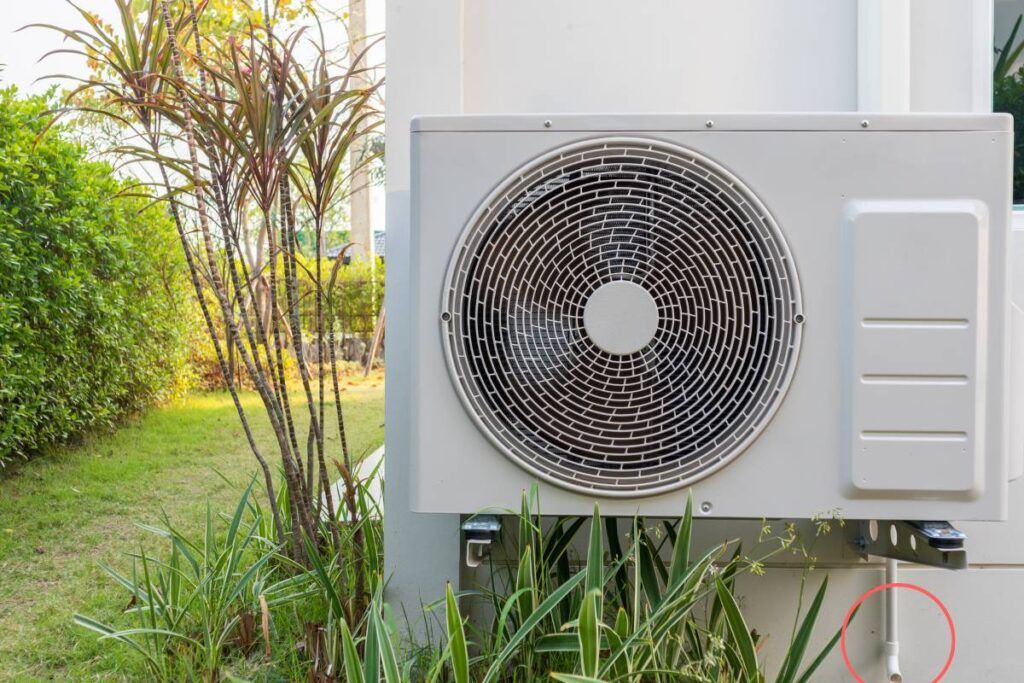While owning and maintaining an air conditioner, you need to know what to do and what not to do. It will ensure that your units keep working properly in the long run. One common debate about the unit is whether to cap the AC drain line. That’s what we shall discuss today.
Generally, it is advised not to cap your AC drain line as it can clog back and cause system overflow. However, if the unit is maintained correctly and at regular intervals, you can cap the drain line without any issues. Also, Consider capping your drain line if your AC usage is minimal.
In this article, we shall discuss whether to cap the AC drain line and the merits and demerits of capping. Since capping sometimes prevents clogging and sometimes doesn’t, we will also learn other ways to unclog the drain line.

Check out our list of top-handpicked products for all your electrical, appliance, and HVAC system needs to keep your home running smoothly.
This post includes some affiliate links.Should I cap the AC drain line?
Maintaining the air conditioner is very important so that it can operate well.
Besides, you should know what to do and what not to do so that you can do the best for the unit and help it function at its best.
Many people are confused about the capping of the air conditioner’s drain line.
Generally, it depends on how to use it and the present condition of the air conditioner.
You can cap the drain line if you have maintained the unit well.
But sometimes, capping can clog the drain line and create issues for the air conditioner.
Before you cap the drain line, you must consult an expert and ensure that your air conditioner is in dire need.
If your air conditioner’s drain line does not need it, capping it will lead to several inefficiencies.
To understand more about whether to cap the drain line, you need to know the benefits and drawbacks of adding the cap.
What are the advantages of adding a cap to the AC drain line?
Though most people keep the air conditioner’s drain line uncapped, there are good benefits of capping the drain line.
Here are a few of them:
Increased efficiency
Capping the air conditioner’s drain line increases its efficiency.
The caps will retain the air more and stop it from escaping from the interior.
As a result, the air will remain inside the house and keep the room cool, thus increasing the unit’s efficiency.
If the drain line remains uncapped, this cool air will escape from the room. As a result, your unit must run at its full capacity to provide you with cool air.
Over time, the unit may become weak and stop working properly.
But with a cap, the unit does not have to run over time and will have a longer lifespan.
Draining purposes

Capping the AC’s drain line will help in draining purposes, especially if the coil is on the negative side.
The primary line will need a cap.
If it remains uncapped, the air will be sucked by this line and block the line.
If the primary line gets blocked, the water will not drain.
In that case, it will drain from the secondary line.
Capping can prevent the water from draining through the secondary line.
There are multiple trap types for your air conditioner.
But finding the right one is quite a job.
Some good trap options are:
- Condensate trap from ZAINAB: This trap is good for furnaces and air conditioners.
- Little Giant Automatic Condensate Removal Pump: This trap will have a safety switch that shuts down during the overflow.
- Protech 68-24048-01: It is a good trap and elbow assembly, and it has a tank-like structure which makes the trap long-lasting.
What are the disadvantages of capping an air conditioner drain line?
The drawbacks of adding a cap in the air conditioner’s drain line are taken more into account than the benefits.
You need to cap the drain line only if there is a necessity.
Otherwise, capping the line will do no good to your unit.
Here are some disadvantages of capping a drain line:
System overflow

Some experts suggest that capping the air conditioner drain lines can cause the system to overflow.
The water won’t be able to drain properly due to the blockage caused by the cap.
Since the cap will block the passage, the air won’t be able to push the water.
The water won’t drain through the primary line but flows out from the emergency pan.
The weather, too, cannot blow out.
As a result, the water will go to the system, creating a water overflow.
In that case, anything wrong can happen with the cooling system.
The AC may stop responding, blow out too much water, or make your room colder than you expect it to make.
Sometimes, the house owner or an expert drills a small hole in the cap to let enough air pass out and force the extra water to drain out.
Clogged drain line
Capping the drain line will clog the drain line.
The water will drain but not completely.
Some water will stay in the drain line and start dripping through the secondary drain line.
The line will start clogging the water.
You can understand it by measuring the water.
Generally, a drain line should drip around 5 to 20 gallons of condensate per day.
If the amount is less, there is clogging in the drain line.
You can also understand this if you see that the water is draining through the emergency pan.
What factors should you consider after capping the drain line?

Though the drawbacks are more effective than the advantages, capping an air conditioner drain line only applies when required.
When you decide to cap the drain line, you need to follow some tips and consider them.
These tips will encourage the drain line to work at its best without facing overflow or clogging problems.
Here are a few tips that might help to encounter the drawbacks:
- If you have capped your air conditioner’s drain line, you should check the drain line regularly for any clotting.
- Do not cap the drain line with any glue. If you use glue, you might face difficulty removing it when required.
- Gently press the cap to clean the pipe.
- You can use ¼th cup of vinegar if you spot any clogging in the drain line. Directly pour the vinegar inside the line to clean the line. Put the cap back once everything is clear. Use it once a month.
- Make a small hole at the center of the cap to prevent clogging.
How to clean an air conditioner drain line?
Capping the air conditioner drain line can prevent the air from getting sucked by the line, which further causes problems in draining.
However, there are other ways to increase the draining, except for capping. Capping can also clog the water and cause an overflow.
Here are the simple steps to clean the drain line:
- Please turn off the air conditioner at the breaker box before you do anything with it. It will prevent you from getting an electric shock.
- Find out the drain pipe. The small PVC pipe will be located close to the unit’s outside.
- Look for the access point after you get the pipe. It will be a small cap or cover that you need to remove.
- Flush the air conditioner’s drain line with water by connecting a garden hose to the access point. Run the water until the drain line gets cleared.
- Use a wet or dry vacuum to clean the drain line if flushing the water does not work properly.
- Replace the access point once you have cleaned the drain line. It will prevent the line from further clogging.
- Switch on the air conditioner at the breaker and check for leakages. It will ensure that the line has been properly cleaned without any damage.
If you find any leaks in the drain line, call a professional to replace the line.
How can I avoid the drain line from clogging?

When your air conditioner’s drain line tends to clog very often, you must take steps to prevent clogging.
One way is by cleaning the drain line regularly to control clogging.
Dust is one of the main causes of clogging.
Cleaning the drain line from time to time will keep the evaporator coil and filters from accumulating dust and debris.
Make sure that you have positioned the drain line in the right place.
Otherwise, the water cannot drain and cause clogging.
Cleaning the drain line with water is one of the best ways to prevent debris from accumulating in the drain line.
You can also use warm water to clean the dust faster.
Another way to keep the drain line clean and prevent clogging is by using vinegar in the drain line.
Pour the vinegar into the drain line and wash it with normal water.
Repeat the process once a month.
You can also use bleach in the drain line, but 1-2 times a year.
However, experts do not recommend using bleach as it can corrode the drain pipe.
You might have to change it before time and spend extra money.
Vinegar and water are good choices.
Signs that your air conditioner’s drain line is clogged

It is sometimes difficult to understand the clogging in the AC unit’s drain line.
Fortunately, you can identify the problems with the help of certain symptoms.
Knowing these symptoms will help you know that there has been a clot in the line and that it is time for cleaning.
Taking immediate steps can prevent further clogging and stop the system from suffering too much.
If the clogging increases to a great level, it will cause expensive damage.
To save from such damages, follow the symptoms and clean your drain line in time.
- The handler unit will flood if your air conditioner faces a drain line blockage.
- Water will drip from the unit if there is a clog.
- The appliance’s safety switch will get triggered and shut off the system due to excessive moisture levels.
- Excessive moisture can cause malfunctioning of the unit.
- Your drain line is badly clogged if you feel the air from the unit is moist and damp.
If you find any of these signs, you must take immediate action.
If you delay, soon you will find mold growth inside the drain line and the system.
If that happens, the mold will easily spread through the air and deteriorate the health of the house members, especially those with allergies and lung problems.
You don’t want to live in a place that is unsafe and uncomfortable.
Cleaning materials to help the AC drain line work properly
If you want to keep your air conditioner’s drain line working well, here are some materials you can try to clean the drain line.
AC drain line buildup remover air conditioner condensate
This item will prevent clogs and leakages in the drain line.
The remover will also remove the buildup of other things in the drain line.
It is safe and non-corrosive.
Flexible drain brush nylon cleaner double-ended elastic hose pipe
The cleaner is a double-ended brush with rotating bristles and is made of stainless steel.
It will make the cleaning easier and work great around the stopper.
The cleaner will be a perfect tool to clean and unclog the drain line.
The product will last for around 3 to 6 months, which is great.
Rectorseal mighty AC condensate drain line pump
This product is one of the best tools for cleaning the AC drain line.
It does not require electricity or batteries, and it can make cleaning easy.
What should be the distance of the drain line from your house?
The side of the house is where the drain lines terminate, mostly around 6 inches above the ground.
You will place it in a place that is big enough to carry the drainage and then seep into the ground.
If the distance is different from what is required, the house’s walls will have a cracked foundation due to the water discharge.
That is quite expensive damage. So, maintain a good distance.
Can I snake the AC drain line?
You can snake an air conditioner’s clogged drain line to clear the blockages.
The air conditioner drain line suffers from frequent clogging for various reasons, such as dirty filters, mineral deposits, mold, mildew development, etc.
Snaking the drain line will clear these blockages and help in good drainage.
While snaking, ensure that you do not push the blockage too far away down the drain line.
Final thoughts
The chances of capping the drain line of your air conditioner are half-half.
Capping the drain line stops the air from escaping and makes your room chill. It further increases the unit’s efficiency.
Capping also allows good drainage as it prevents the air from getting sucked by the primary line and allows the water to drain well.
However, you can create a small hole for easy drainage.
On the contrary, capping the drain line clogs the line and doesn’t allow the water to drain completely.
If the primary line is blocked, water drains through the secondary line.
If both lines are capped, water remains inside the system and starts overflowing.
There are several ways to clean a clogged air conditioner.
Run normal or warm water to clear the clogging.
You can also use vinegar once a month.
You must identify the signs of clogging, like system overflow, water dripping, musty air coming out of the AC, etc.
Take immediate steps to clean the unit, or you will end up with expensive damages and dangerous mold.
FAQs
Is bleach better or vinegar?
You can use both of them, but vinegar is better than bleach.
With bleach, there could be chances of corrosion.
But vinegar does not cause any such thing.
Pour ¼ cup of vinegar inside the drain line every 1-2 months for better results.
How often can I use bleach?
Though it is dangerous, you can use only 2 cups every 1-2 times yearly, provided the clogging is too much.
Bleach has a powerful corrosion effect.
Sometimes, you can use hot water instead to clean the drain line or use a thick stick or rod to remove the clogging. Then wash it with water.
